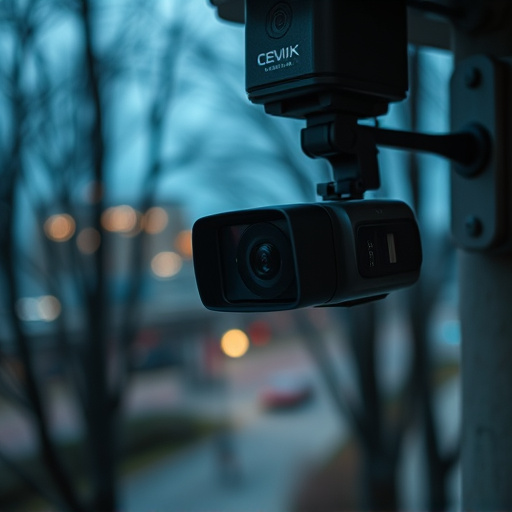Wireless spy cameras with cloud storage offer unparalleled convenience for surveillance, transmitting video feeds via internet connection and storing data either locally or remotely in the cloud. This technology empowers users to discreetly monitor locations from anywhere, but managing large data outputs requires efficient cloud storage solutions. To identify hidden wireless spy cameras, look for unusual devices or accessories, inspect corners for hidden compartments, and check cloud storage permissions. Protecting privacy involves encrypting data transmission, using strong passwords, updating firmware, and employing decoys while navigating legal considerations, including obtaining consent, adhering to local regulations, and respecting data protection guidelines.
Uncover the secrets behind wireless surveillance equipment with our comprehensive guide. In today’s digital age, understanding wireless spy camera technology is paramount for both home and business owners. Learn how cloud storage can maximize data retention and enhance security measures to protect against hidden threats. Discover practical tips for locating hidden cameras and explore legal considerations surrounding their use.
- Understanding Wireless Spy Camera Technology
- Maximizing Cloud Storage for Surveillance Data
- Locating Hidden Cameras: Practical Tips and Tricks
- Security Measures to Protect Against Wireless Surveillance
- Legal Considerations for Wireless Surveillance Equipment Use
Understanding Wireless Spy Camera Technology
Wireless spy cameras have revolutionized surveillance technology, offering unprecedented convenience and accessibility. These compact devices transmit video feeds wirelessly to a central receiver or cloud storage, making it possible to monitor activities from anywhere with an internet connection. Understanding how this technology works is crucial for effective deployment and location detection.
The core component of a wireless spy camera system is the device itself, which captures video and audio data. It connects to a network via Wi-Fi or cellular signals, allowing real-time streaming and remote access. The footage is then stored either locally on an internal memory card or uploaded to cloud storage for future reference and accessibility from anywhere in the world. This technology enables users to discretely monitor homes, offices, or any other space, making it a popular choice for security and surveillance purposes.
Maximizing Cloud Storage for Surveillance Data
Wireless spy cameras have revolutionized surveillance, but managing the vast amounts of data they generate can be a challenge. Maximizing cloud storage is a strategic approach to ensure efficient and secure data management for your wireless surveillance system. By utilizing cloud storage, you gain accessibility from anywhere at any time, enabling remote monitoring and analysis of captured footage.
This method also offers scalability and cost-effectiveness. Cloud storage solutions allow you to easily expand capacity as your surveillance needs grow, eliminating the hassle of managing physical storage devices. Moreover, many cloud providers offer advanced data encryption and security protocols, ensuring that your sensitive surveillance data remains protected and confidential.
Locating Hidden Cameras: Practical Tips and Tricks
When it comes to uncovering hidden surveillance equipment, especially wireless spy cameras, a keen eye for detail and some practical tricks can go a long way. Start by checking for any unusual devices or accessories around your property. Wireless spy cameras often come with specific storage units or remote controls that could be easily identified if you know what to look for. Inspecting corners, behind furniture, or under objects for small, hidden compartments or strange wiring is another effective method.
Additionally, leveraging cloud storage associated with these devices can provide valuable clues. Many wireless spy cameras sync footage to the cloud through apps or dedicated software. By examining the camera’s app permissions and recent activity, you might uncover evidence of ongoing surveillance. Moreover, checking for any unfamiliar Wi-Fi networks in your area that could be linked to these devices is a smart step in identifying potential hidden cameras.
Security Measures to Protect Against Wireless Surveillance
Protecting your privacy from wireless spy cameras is paramount in today’s digital age. A robust security measure involves encrypting all data transmission, ensuring that even if a device is intercepted, the information remains unreadable. Using strong, unique passwords for all surveillance equipment and enabling two-factor authentication adds an extra layer of defense.
Furthermore, leveraging cloud storage with military-grade encryption can safeguard your footage remotely. Regularly updating firmware and software to patch security vulnerabilities is also crucial. Additionally, keeping devices hidden and using false triggers or decoys can deter potential intruders from even attempting wireless surveillance.
Legal Considerations for Wireless Surveillance Equipment Use
When utilizing wireless surveillance equipment, such as spy cameras with cloud storage capabilities, it’s paramount to navigate legal considerations to ensure compliance and avoid potential pitfalls. Different jurisdictions have distinct laws governing the use of surveillance technology. Understanding these regulations is crucial to protect privacy rights and maintain ethical standards.
One key aspect involves obtaining consent from individuals being monitored, especially in public spaces. Many countries have strict guidelines on data protection and privacy, which often require explicit authorization for recording or storing personal information. Additionally, there might be restrictions on the types of surveillance equipment allowed, their placement, and the duration of monitoring. Staying informed about these legal frameworks is essential to ensure responsible and lawful use of wireless spy cameras and associated cloud storage services.
Wireless spy cameras have revolutionized surveillance, but their increasing popularity also means users must be vigilant. By understanding the technology, maximizing cloud storage for efficient data management, and implementing robust security measures, individuals can protect their privacy effectively. Additionally, adhering to legal guidelines for wireless surveillance equipment use is paramount to avoid potential pitfalls. Remember, staying informed about these tips and tricks ensures a secure digital environment.
